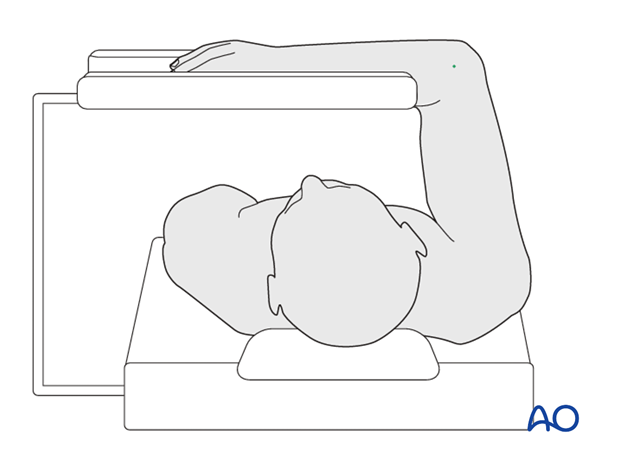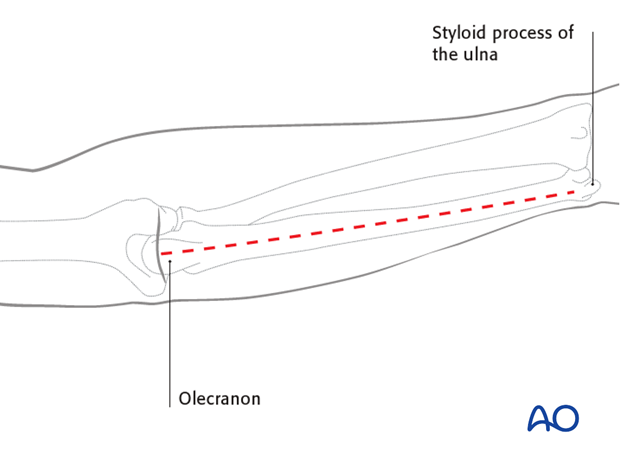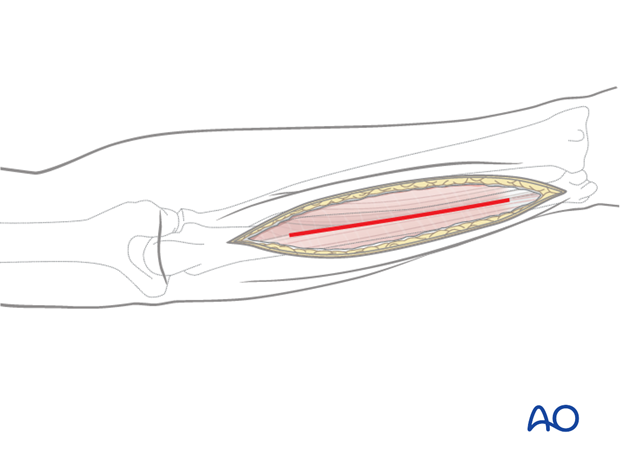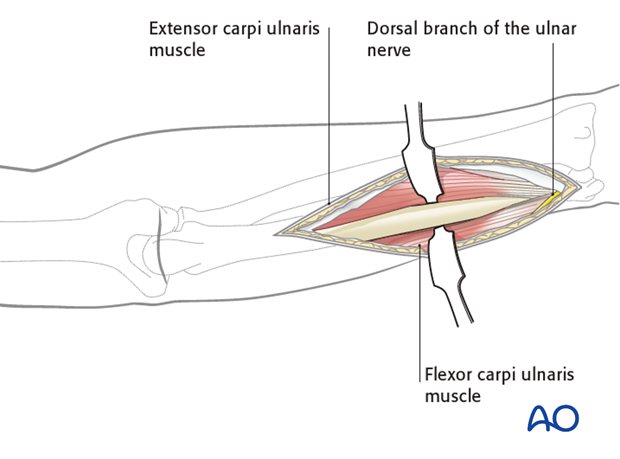Approach to the ulna
1. Introduction
In the following, we shall illustrate the approach to the middle and distal thirds of the ulnar shaft. This approach can be extended both proximally and distally.
Positioning of the forearm
The positioning of the arm for an approach to the ulna will depend on whether a radial fracture fixation is also necessary.
In isolated ulnar fractures, reduction is often aided by holding the arm in neutral pronation/supination.

Isolated ulnar fracture - arm across the torso
In isolated ulnar fractures, some surgeons prefer to place the patient’s arm over the chest to allow for comfortable access.
Isolated ulnar fracture - arm on side table
There are surgeons who prefer the arm at the side with the elbow resting on a side table and the forearm held vertically.
Ulnar fracture with radial fracture
The arm is usually positioned on a side table to permit the appropriate radial approach. The ulnar fixation is performed with the forearm held vertically and the elbow resting on the side table.

2. Skin incision
The standard ulnar approach offers good exposure along the whole ulnar shaft. The length of the incision depends on the exposure needed.
The skin incision follows the subcutaneous border of the ulna, along a line drawn between the tip of the olecranon process and the ulnar styloid process.
Pearl: If the forearm is markedly swollen, it may not be possible to close the skin of the ulnar approach. In these circumstances, it is better to plan the skin incision over the adjacent extensor muscle compartment, so that an open incision will have a muscular bed rather than exposing the implant.

Deep dissection
The deep dissection should be carried out in the interval between the flexor carpi ulnaris and the extensor carpi ulnaris muscles.

3. Dorsal branch of the ulnar nerve
In a very distal extension of the ulnar approach, take care to avoid injury to the dorsal branch of the ulnar nerve, as it runs to the back of the hand.













